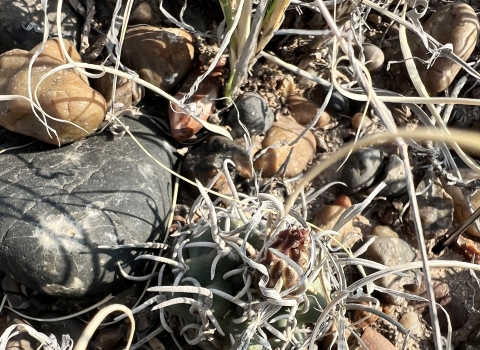Atlanta -- The U.S. Fish and Wildlife Service released today the final land protection plan which allows for the protection of up to 287,090 acres of wildlife habitat and hardwood forest as part of the Roanoke River National Wildlife Refuge. The plan will guide conservation of a wildlife habitat corridor stretching along the Roanoke River from Weldon to the mouth of the river at Albemarle Sound.
Investment in, and expansion of, the National Wildlife Refuge System furthers the Biden-Harris administration’s work to support community-driven efforts to conserve and restore the nation’s lands and waters through America the Beautiful initiative. Under Secretary Haaland’s leadership, the Department has also established four new Refuges.
The Service’s plan expands the approved acquisition boundary for the Roanoke River NWR along a 137-mile-long river corridor to protect the integrity of the floodplain forest and to benefit rare and at-risk species, including Atlantic sturgeon, cerulean and Swainson’s warblers and bald eagles. Wild turkeys, wood ducks, mallards and white-tailed deer that make eastern North Carolina a recreational paradise will flourish with more land set aside for protection.
The final land protection plan addresses public comments received on the proposed plan during a 30-day comment period. The public, landowners, and conservation partners were also invited to participate in two public meetings addressing the proposal, one held in person, the other virtually.
“We are grateful for the input we received from the community, supporting the expansion of Roanoke River National Wildlife Refuge,” Mike Oetker, regional director for the U.S. Fish and Wildlife Service Southeast Region, said. “We look forward to continued collaboration as we come together to conserve and protect the rivers and habitat important to all of us and numerous fish and wildlife species. The Service is a unique part of this community, and we want to explore innovative ways to work together to ensure clean air and water for our families.”
The expansion allows for the refuge to eventually encompass up to 83,000 acres. The plan also allows the Service to protect up to 100,000 additional acres through conservation easements, which are voluntary agreements that allow landowners to maintain working and private lands as they are with no further subdivision or development. The rest of the conservation area conservation area
A conservation area is a type of national wildlife refuge that consists primarily or entirely of conservation easements on private lands. These conservation easements support private landowner efforts to protect important habitat for fish and wildlife and major migration corridors while helping to keep agricultural lands in production.
Learn more about conservation area will be composed of land owned by public and private partners. The release of the final land protection plan will guide future acquisitions but does not add acreage to existing refuge ownership.
The refuge was established in 1991 to protect forests along the floodplain, the largest intact, and least disturbed, bottomland forest in the mid-Atlantic. The floodplain along either side of the river is home to the most extensive bottomland hardwood forest on the East Coast and provides important habitat for numerous fish, wildlife, and plants. It’s a key stopover along the Atlantic Flyway for neotropical migratory birds, as well as ducks, wading birds and raptors. The expansion area supports at least five heron rookeries and habitat for swallow-tailed kites and cerulean warblers. Hickory shad, alewife and blueback herring utilize the floodplain while American shad, Atlantic sturgeon and striped bass spawn in the mainstem of the Roanoke River.
The expansion will enable the creation of a protected migration corridor, allowing wildlife and plants freedom of movement from the ocean to higher ground. This biologically based land protection plan will guide improved water quality in the region, conservation of the most extensive bottomland hardwood forest on the East Coast and creation of a healthier landscape on the Albemarle-Pamlico peninsula. This year marks the 121st anniversary of the National Wildlife Refuge System - an unparalleled network of 571 national wildlife refuges, 38 wetland management districts and 5 marine national monuments. There is a national wildlife refuge national wildlife refuge
A national wildlife refuge is typically a contiguous area of land and water managed by the U.S. Fish and Wildlife Service for the conservation and, where appropriate, restoration of fish, wildlife and plant resources and their habitats for the benefit of present and future generations of Americans.
Learn more about national wildlife refuge within an hour’s drive of most major metropolitan areas – hosting some 67 million visits every year – almost all offering free admittance year-round. National wildlife refuges provide vital habitat for thousands of species and access to world-class recreation, from fishing, hunting and boating to nature watching, photography, and environmental education.
###
The U.S. Fish and Wildlife Service works with others to conserve, protect and enhance fish, wildlife, plants and their habitats for the continuing benefit of the American people. For more information, visit www.fws.gov, or connect with us through any of these social media channels: Facebook, Twitter, YouTube and Flickr.



